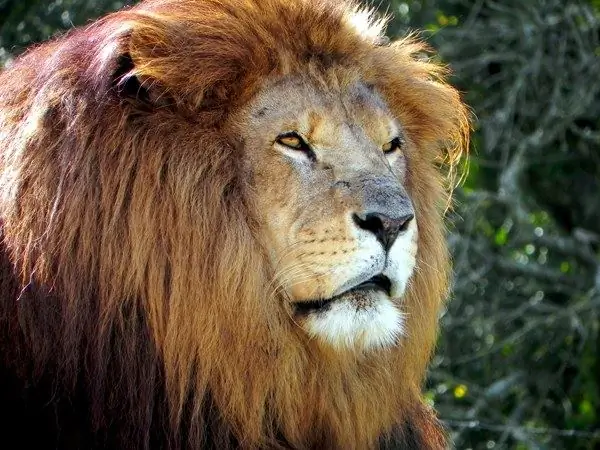Lions are one of the most majestic and beautiful creatures in the animal kingdom. They have become a symbol of courage for many people. Since ancient times, these animals have become a favorite subject for many artists.

Instructions
Step 1
Take your time to start drawing right away. It is better to first study the illustrations and photographs that depict these noble animals. The more details and little things you notice at this stage, the more accurately you can depict them in the picture.
Step 2
Pay attention to the lion's poses, in which he is most often depicted. For example, a calm lion sits regally on a small hill, like the Egyptian sphinx. A sleeping lion can lie straight, resting its head on its front paws, or it can completely collapse on its side.
Step 3
After choosing a suitable pose for the drawing, sketch out the approximate silhouette of the animal. For the head, draw an ellipse. Draw the front and back parts of the body in the form of circles. Connect them with two arched lines. Make each paw from three oval elements.
Step 4
At this stage, the lion's head is slightly distant from the body. But there is no need for you to draw the animal's neck. Connect these two elements with a lush mane. Surround the head and front of the torso with a large, rounded figure drawn using a zigzag line. This will create a mane with prominent tufts of fur.
Step 5
At the top of the head, draw two small almond-shaped eyes. Place small black pupils inside them. Draw a vertical line in the middle of the forehead. On both sides of this line, put one short dash.
Step 6
Draw subtle lines from the inner corners of the eyes towards the bottom of the head. Combine the ends of these lines with a flattened heart shape. This will be the nose of the lion. Add nostrils to it. Pull the short line down from the nose and at the end draw a wide tick, the tip of which is pointing up. This shape will represent the mouth of the animal. Surround the lion's nose and mouth with an incomplete oval with the free ends pointing up.
Step 7
Using the auxiliary shapes drawn earlier as an example, draw the paws of the lion. Note that the joints appear more pronounced on the hind legs. Draw four rounded toes on each paw. Add a long S-shaped tail to the lion. Shade the end of the tail lightly.






